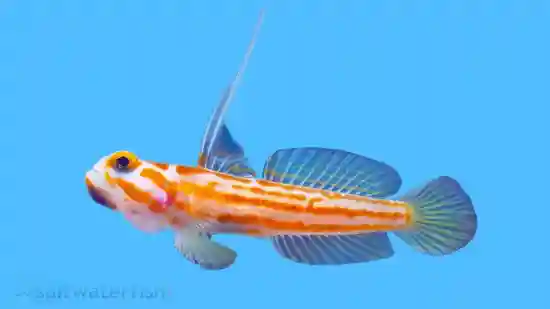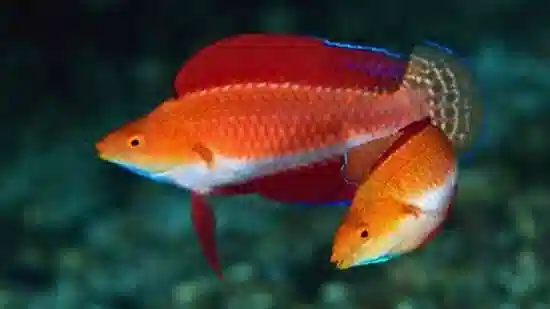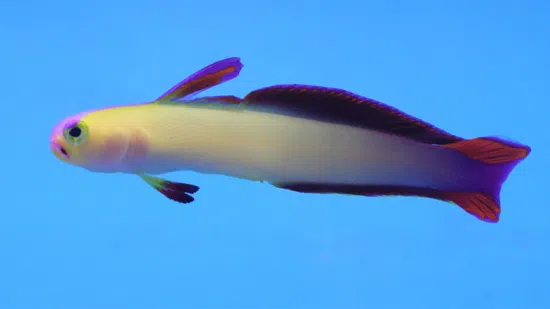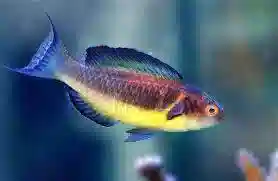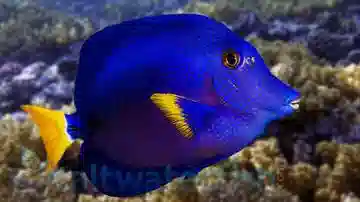Purple Tang - Red Sea
Zebrasoma xanthurum
(4 Reviews)
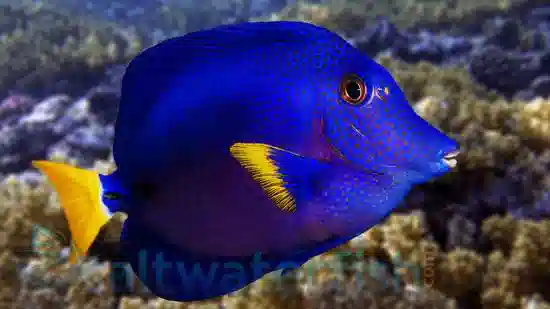
Purple Tang - Red Sea
Zebrasoma xanthurum
(4 Reviews)
{{ item.name }}
Size: {{ item.extra_field_3 }}
${{ getFormattedPrice(item.saleprice) }} ${{ getFormattedPrice(item.price) }}
To join the waiting list, click here
Free Shipping
With
$199.00
or more in Marine Life.
More details...
Purple Tang - Red Sea Care Facts
| Care Level: | Easy |
|---|---|
| Temperament: | Peaceful |
| Diet: | Omnivore |
| Reef Safe: | Yes |
| Minimum Tank Size: | 120 gallons |
| Max Size: | 10 inches |
The Purple Tang is commonly referred as the Yellowtail Sailfin Tang, Yellowtail Surgeonfish, and the Blue Surgeonfish. It has a purple colored body with yellow tail and yellow accents on the pectoral fins. The Purple Tang requires lots of free-swimming space and plenty of potential hiding spots. The Purple Tang can be very aggressive and do not get well with other tangs of the genus Zebrasoma. It feeds on meaty foods, it is important to offer them plenty of marine-based seaweed and algae as well.
Introducing the Purple Tang (Zebrasoma xanthurum)
Explore the striking and captivating addition that is the Purple Tang (Zebrasoma xanthurum), renowned for its regal beauty and graceful movements in saltwater marine aquariums. This article delves into various facets of the Purple Tang, including its natural habitat, reef compatibility, size, lifespan, dietary preferences, aquaculture potential, temperament, suitable tank mates, tank requirements, water conditions, alternative common names, compatible tank mates, and the benefits of acquiring Purple Tangs from Saltwaterfish.com. Discover why this species is a prized choice among marine enthusiasts.
Habitat and Distribution:
The Purple Tang is indigenous to the Indo-Pacific region, spanning from the Red Sea to the western Pacific Ocean. It thrives amidst the intricate ecosystems of coral reefs, making it a sight to behold in the confines of a well-maintained aquarium.
Reef Compatibility:
The Purple Tang is generally considered reef safe, with a propensity for grazing on algae rather than coral polyps. However, providing a variety of algae-based foods is recommended to support their dietary needs and minimize any coral-related interactions.
Size and Lifespan:
This tang species can reach a length of approximately 9 to 10 inches (23 to 25 cm), gracing your aquarium with its regal presence. Under optimal care, Purple Tangs can live for a decade or more.
Diet:
The Purple Tang is primarily herbivorous, requiring a diet rich in algae and vegetable matter. A mix of high-quality marine pellets, seaweed sheets, and fresh greens ensures their nutritional well-being.
Aquaculture Potential:
Purple Tangs are available in the aquarium trade, with both wild-caught and aquacultured specimens accessible. Opting for aquacultured Purple Tangs supports sustainable practices and contributes to the conservation of wild populations. Saltwaterfish.com has a constant supply of aquacultured Purple Tangs, reasonably priced from one of the foremost aquaculture facilities in the USA. Check them out here.
Temperament:
Purple Tangs are known for their spirited personalities and territorial behaviors. Introducing them to the aquarium last is advisable to minimize potential aggression towards new tank mates.
Suitable Tank Mates:
Angelfish (e.g., Koran Angelfish): Certain angelfish species with differing colors and body shapes can coexist harmoniously with Purple Tangs.
Blennies (e.g., Midas Blenny): Peaceful blennies can share the tank with Purple Tangs, adding diversity to the ecosystem.
Wrasse (e.g., Six Line Wrasse): Peaceful wrasse species can create an engaging and dynamic tank environment alongside Purple Tangs.
Hawkfish (e.g., Flame Hawkfish): Hawkfish with distinctive characteristics can cohabitate with Purple Tangs, enhancing the visual appeal of the aquarium.
Basslets (e.g., Royal Gramma): Basslets with contrasting behaviors and coloration can coexist with Purple Tangs, contributing to the overall aesthetic of the tank.
Tank Requirements and Water Conditions:
A well-equipped aquarium with ample swimming space is vital for the well-being of Purple Tangs. A tank size of at least 100 gallons is recommended to provide room for their active swimming habits. Consistent water quality, proper filtration, and optimal lighting are crucial to support their health and vibrant appearance.
Why Choose Saltwaterfish.com:
Sourcing Purple Tangs from Saltwaterfish.com offers numerous advantages. Their commitment to ethical and sustainable practices ensures you receive healthy and responsibly sourced specimens. Saltwaterfish.com provides comprehensive information about each species, aiding in well-informed decision-making. With a variety of options, exceptional customer support, and a streamlined purchasing process, Saltwaterfish.com guarantees a smooth and satisfying experience for marine enthusiasts.
In conclusion, the Purple Tang (Zebrasoma xanthurum) is a captivating and regal addition to saltwater marine aquariums. Its vibrant coloration and elegant movements make it a cherished member of marine ecosystems. By providing suitable tank arrangements and selecting compatible tank mates, enthusiasts can appreciate the beauty and vibrancy of these captivating tangs in their aquatic sanctuaries. When considering the acquisition of this exceptional species, choosing Saltwaterfish.com ensures a reliable and ethical source that prioritizes marine life's health and well-being. With proper care and attention, the Purple Tang can become a breathtaking and iconic centerpiece in any saltwater aquarium, enriching the allure and elegance of the underwater world.
So cute. Very beautiful. Arrived active and healthy
Reviewed by: Clifton Davis on Sept. 29, 2024
Doing great great color
Reviewed by: Anthony Little on Dec. 7, 2023
Everything looks good!
Reviewed by: Cody Whitaker on Nov. 5, 2023
Surprisingly dark in color. It looks more black than purple. Hopefully it'll lighten as it gets older. This fish is indeed bold. Refused to be intimidated by my other tangs. Now they all appear to get along.
Reviewed by: Esther Murphy on March 8, 2018


